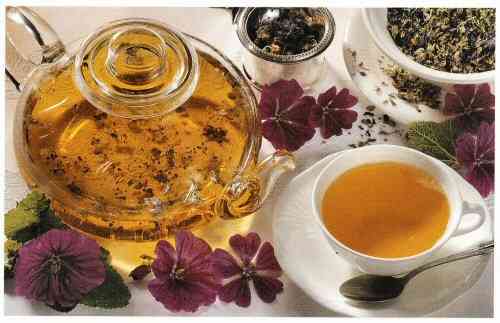
Malva Tea Malacus
Malva, or Althea sylvestris, has light-pink to purple flowers and grows in regions all over the world. Overseas, it is commonly referred to as "mallow." In the United States, however, the term "malva" is more common to distinguish it from the marshmallow plant. The young leaves of malva are harvested in the spring, and its blossoms are gathered in the summer and early fall. While both plant parts can be used to make many teas, the preparations made with flowers are more commonly found in the U.S.
The word "malva" is derived from malakos, which in Greek means "soothing"; not surprisingly, malva tea is often given as a gargle to reduce throat inflammations. Drinking the tea also helps calm stomach and intestinal irritation. Warm compresses can draw toxins from pimples abscesses and other skin inflammations while cool tea compresses can help to relieve superficial burns. The active components of malva are mucilage (which is a viscous substance), tannins and malvin, a red pigment.